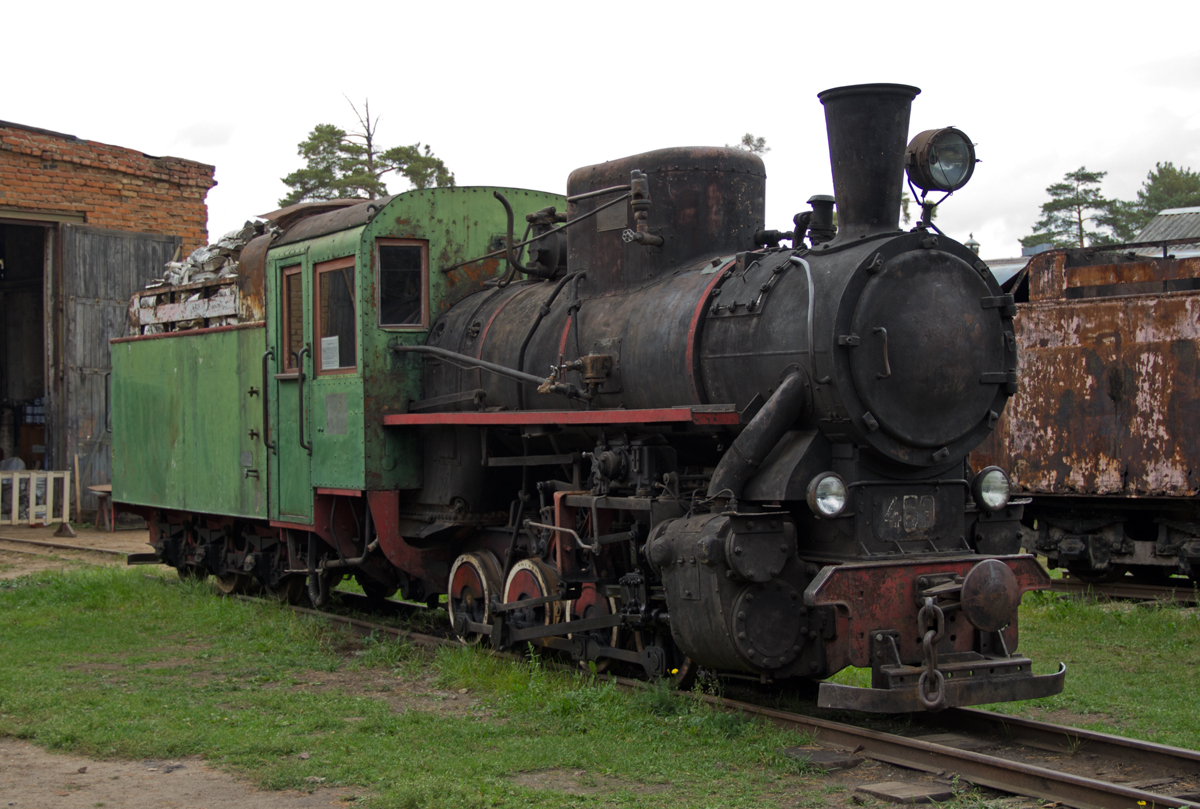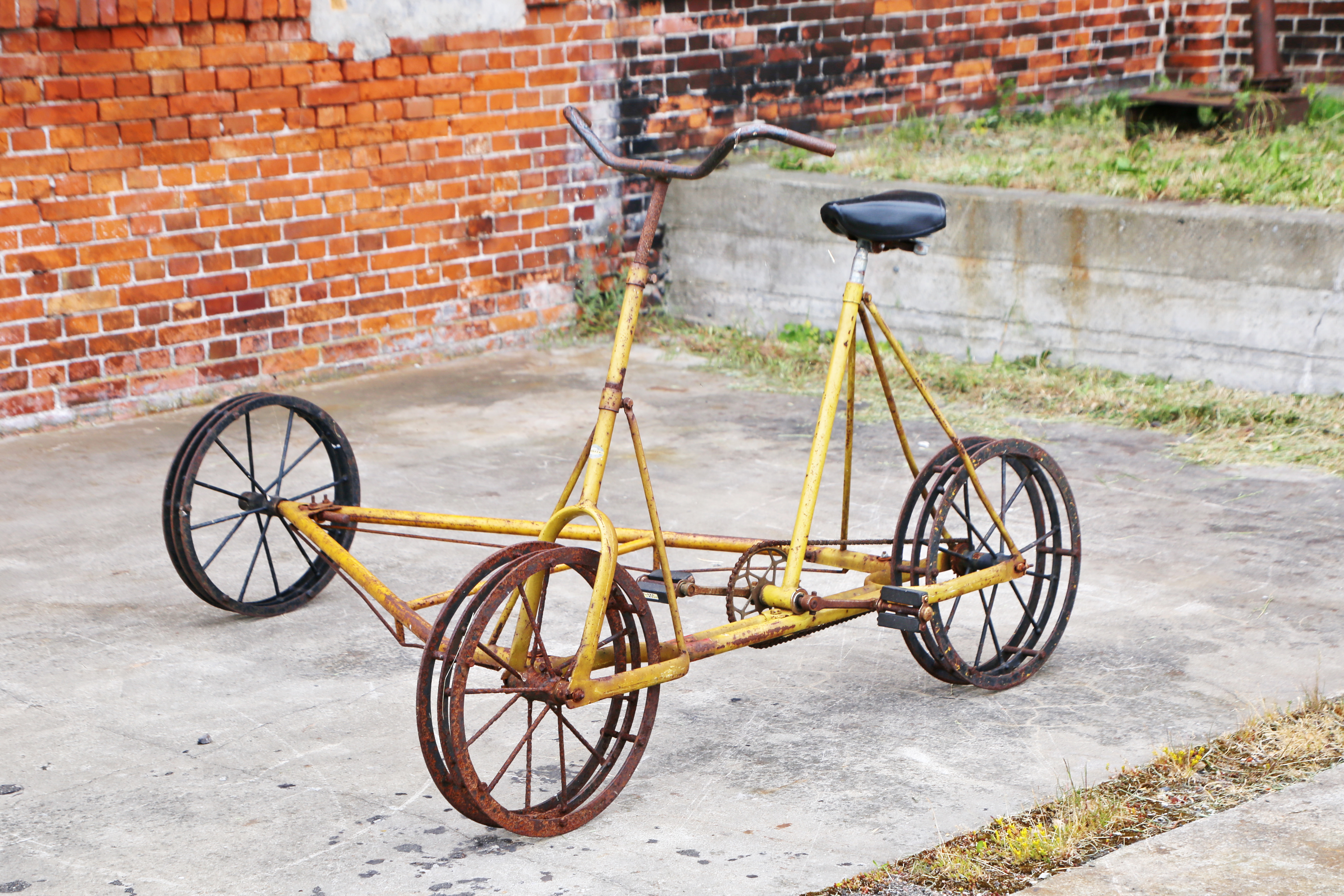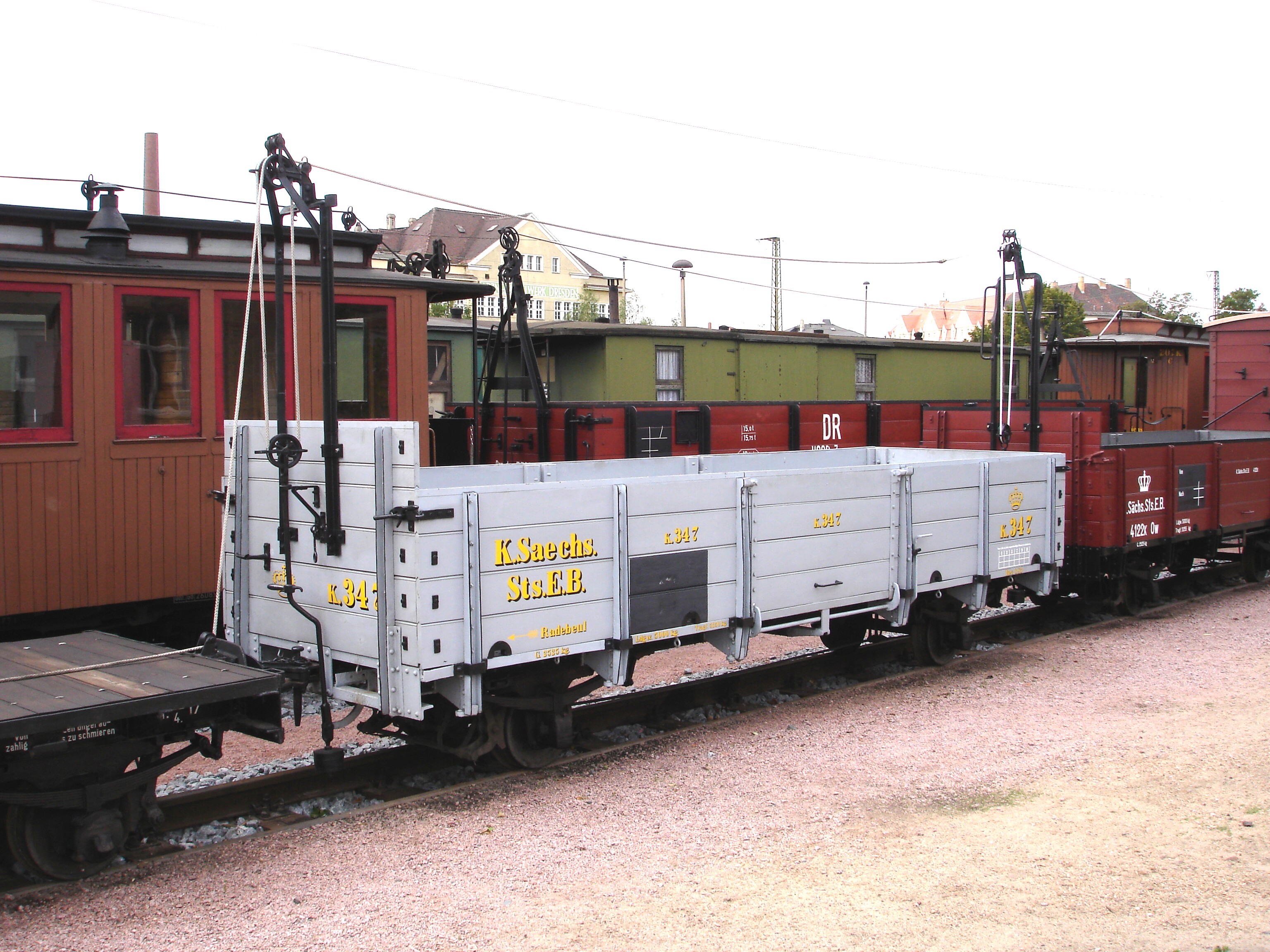|
Ronga Narrow Gauge Railway
The Ronga narrow gauge railway (''russian: link=no, ะฃะทะบะพะบะพะปะตะนะฝะฐั ะถะตะปะตะทะฝะฐั ะดะพัะพะณะฐ ะ ะพะฝะณะธะฝัะบะพะณะพ ัะพััะพะฟัะตะดะฟัะธััะธั, Ronga uzkokoleynaya zheleznaya doroga'') is located in Mari El, Russia. The peat railway was opened in 1967 and has a total length of . It remains operational . The track gauge is and it operates year-round. Current status The peat enterprise Ronga was established in the 1960s in the village of Ronga, Mari El. The first line of the Ronga peat narrow-gauge railway was constructed in 1967 within the Sovetsky District, starting from the village of Ronga. The peat railway was specifically built for hauling milling peat and transporting workers, and it operates year-round. At its peak of development, the total length of the narrow-gauge railway exceeded , of which is currently operational. In 2011, repairs were being made to the track. Rolling stock Locomotives * TU6A โ โ 3745 * TU8 Railway cars * Flatca ... [...More Info...] [...Related Items...] OR: [Wikipedia] [Google] [Baidu] |
Mari El
The Mari El Republic (russian: ะ ะตัะฟัฬะฑะปะธะบะฐ ะะฐัะธฬะน ะญะป, ''Respublika Mariy El''; Meadow Mari: ; Hill Mari: ) is a republic of Russia. It is in the European Russia region of the country, along the northern bank of the Volga River, and is administratively part of the Volga Federal District. The republic has a population of 696,459 ( 2010 Census). Yoshkar-Ola is the capital and the largest city. Mari El is one of Russia's ethnic republics, established for the indigenous Mari people, a Finnic nation who have traditionally lived along the Volga River and Kama River. The majority of the Republic's population are ethnic Russians (47.4%) and Mari (43.9%), with minority populations of Tatars and Chuvash. The official languages are Russian and Mari. Mari El is bordered by Nizhny Novgorod Oblast to the west, Kirov Oblast to the north, Tatarstan Republic to the east, and Chuvashia Republic to the south. Geography The Republic is located in the eastern part of the East ... [...More Info...] [...Related Items...] OR: [Wikipedia] [Google] [Baidu] |
TU8 Diesel Locomotive
TU8 () โ Soviet, later Russian diesel locomotive for gauge . History Diesel locomotive TU8 () is used for transportation & shunting services on narrow-gauge railways with a track gauge ranging from to . The TU8 was developed in 1987 โ 1988 at the Kambarka Engineering Works to replace the ageing locomotive classes TU6A (). The cab is equipped with efficient heat-system, refrigerator, radio-set and air conditioning. Series locomotives The diesel locomotive TU8 (ะขะฃ8) has been used as the basis of three other locomotives: * TU8G (ะขะฃ8ะ) * TU8P (ะขะฃ8ะ) * TU6SPA (ะขะฃ6ะกะะ) mobile power station Additional specifications *Distance between bogies โ 4,000 mm *Base of bogies โ 1,400 mm Gallery File:Kud-134310.jpg, TU8, Udimskaya narrow-gauge railway File:ะฃะทะบะพะบะพะปะตะนะฝัะน ัะตะฟะปะพะฒะพะท ะขะฃ8-0427 ั ัััะธััะธัะตัะบะธะผ ะฟะพะตะทะดะพะผ ะฝะฐ ััะฐะฝัะธะธ ะัะฐะผะบะฐ..JPG, TU8-0427, Apsheronsk narrow-gauge railway File:Sharya TU8-0167 w ... [...More Info...] [...Related Items...] OR: [Wikipedia] [Google] [Baidu] |
750 Mm Gauge Railways In Russia (the 75, or, French 75)
{{Numberdis ...
75 may refer to: * 75 (number) * one of the years 75 BC, AD 75, 1875 CE, 1975 CE, 2075 CE * ''75'' (album), an album by Joe Zawinul * M75 (other), including "Model 75" * Highway 75, see List of highways numbered 75 *Alfa Romeo 75, a car produced by Alfa Romeo See also * * * * 1975 (other) * 1875 (other) * Canon de 75 modรจle 1897 The French 75 mm field gun was a quick-firing field artillery piece adopted in March 1898. Its official French designation was: Matรฉriel de 75mm Mle 1897. It was commonly known as the French 75, simply the 75 and Soixante-Quinze (Frenc ... [...More Info...] [...Related Items...] OR: [Wikipedia] [Google] [Baidu] |
List Of Russian Narrow-gauge Railways Rolling Stock
Here is an incomplete list of locomotives and multiple units used by the narrow-gauge railways in Russia. (Russian) Steam locomotives Diesel locomotives Diesel multiple units and railcar See also * *References External links Narrow-gauge ro ... [...More Info...] [...Related Items...] OR: [Wikipedia] [Google] [Baidu] |
Narrow-gauge Railways In Russia
The Imperial Russian narrow railway track gauge was , the current track gauge is predominantly . In Soviet Russia, narrow-gauge railways were mostly common in forestry and peat industries in low inhabited places. Usually they have one main line and number of temporary branches. There was commonly a passenger service to villages and towns for workers. As of the mid 2010s, a number of industrial railways survive in places with bad roads, but every year some railways are closing. A government railway operator, RZD, closed all owned common 750 mm railways, but still have a number of children's railways with standard rolling stock. The most well-known narrow-gauge railways are Alapayevsk narrow-gauge railway (municipal passenger), Apsheronsk narrow-gauge railway (mountain industrial railway with passenger service), and Karinskaya narrow-gauge railway (suburban passenger private railway). Also children's railways are located in many big cities. Overview 1067mm * Sakhali ... [...More Info...] [...Related Items...] OR: [Wikipedia] [Google] [Baidu] |
Draisine
A draisine () is a light auxiliary rail vehicle, driven by service personnel, equipped to transport crew and material necessary for the maintenance of railway infrastructure. The eponymous term is derived from the German inventor Baron Karl Drais, who invented his ''Laufmaschine'' (German for "running machine") in 1817, which was called ''Draisine'' in German (''vรฉlocipรจde'' or ''draisienne'' in French) by the press. It is the first reliable claim for a practically used precursor to the bicycle, basically the first commercially successful two-wheeled, steerable, human-propelled machine, nicknamed hobby-horse or dandy horse. Later, the name draisine came to be applied only to the invention used on rails and was extended to similar vehicles, even when not human-powered. Because of their low weight and small size, they can be put on and taken off the rails at any place, allowing trains to pass. In the United States, motor-powered draisines are known as speeders while human- ... [...More Info...] [...Related Items...] OR: [Wikipedia] [Google] [Baidu] |
Snowplow
A snowplow (also snow plow, snowplough or snow plough) is a device intended for mounting on a vehicle, used for removing snow and ice from outdoor surfaces, typically those serving transportation purposes. Although this term is often used to refer to vehicles mounting such devices, more accurately they are known as winter service vehicles, especially in areas that regularly receive large amounts of snow every year, or in specific environments such as airfields. In other cases, pickup trucks and front end loaders are outfitted with attachments to fulfill this purpose. Some regions that do not frequently see snow may use graders to remove compacted snow and ice off the streets. Snowplows can also be mounted on rail cars or locomotives to clear railway tracks. Usage A snowplow works by using a blade to push snow to the side to clear it from a surface. Modern plows may include technology to make it easier to perform the work and stay on the road. These include Global Positioning ... [...More Info...] [...Related Items...] OR: [Wikipedia] [Google] [Baidu] |
Open Wagon
Open wagons (trucks in the UK) form a large group of railway goods wagons designed primarily for the transportation of bulk goods that are not moisture-retentive and can usually be tipped, dumped or shovelled. The International Union of Railways (UIC) distinguishes between ordinary wagons (Class E/ UIC-type 5) and special wagons (F/6). Open wagons often form a significant part of a railway company's goods wagon fleet; for example, forming just under 40% of the Deutsche Bahn's total goods wagon stock in Germany. UIC standard goods wagons Since the 1960s, the majority of goods wagons procured by European railway administrations have been built to standards laid down by, or based on, those established by the UIC. In addition to open wagons the table also shows wagons with opening roofs (Class T), whose design is based on open wagons. File:El-Wagen-UIC-Bauart1-Zittau.jpg, Twin-axled UIC Type 1 open wagon, used as an ash wagon, on a transporter wagon in Zittau File:Es-Wa ... [...More Info...] [...Related Items...] OR: [Wikipedia] [Google] [Baidu] |
Flatcar
A flatcar (US) (also flat car, or flatbed) is a piece of rolling stock that consists of an open, flat deck mounted on a pair of trucks (US) or bogies (UK), one at each end containing four or six wheels. Occasionally, flat cars designed to carry extra heavy or extra large loads are mounted on a pair (or rarely, more) of bogies under each end. The deck of the car can be wood or steel, and the sides of the deck can include pockets for stakes or tie-down points to secure loads. Flatcars designed for carrying machinery have sliding chain assemblies recessed in the deck. Flatcars are used for loads that are too large or cumbersome to load in enclosed cars such as boxcars. They are also often used to transport intermodal containers (shipping containers) or trailers as part of intermodal freight transport shipping. Specialized types Aircraft parts flatcars Aircraft parts were hauled via conventional freight cars beginning in World War II. However, given the ever-increasing size of ... [...More Info...] [...Related Items...] OR: [Wikipedia] [Google] [Baidu] |
TU6 Diesel Locomotive
TU6 (ะขะฃ6) is a Soviet narrow gauge diesel locomotive for the track gauge of . History The first TU6A was built in 1973 at the Kambarka Engineering Works. 3,915 TU6A locomotives were produced until 1988. The locomotives were used on many narrow gauge railways to move cargo as well as passenger trains. The cab is equipped with efficient heat-system, radio-set and air conditioning. Series locomotives The diesel locomotive TU6A (ะขะฃ6ะ) has been used as the basis of three other locomotives: * TU6P (ะขะฃ6ะ) * TU6D (ะขะฃ6ะ) * TU6SPA (ะขะฃ6ะกะะ) mobile power station File:Mesherskoye peat enterprise 4.jpg, TU6A - 2917, Solotchinskoye railway File:Wikitram.JPG, TU6P (ะขะฃ6ะ), Ukraine See also *Kambarka Engineering Works *Narrow gauge railway A narrow-gauge railway (narrow-gauge railroad in the US) is a railway with a track gauge narrower than standard . Most narrow-gauge railways are between and . Since narrow-gauge railways are usually built with tighter curves, s ... [...More Info...] [...Related Items...] OR: [Wikipedia] [Google] [Baidu] |
Russia
Russia (, , ), or the Russian Federation, is a List of transcontinental countries, transcontinental country spanning Eastern Europe and North Asia, Northern Asia. It is the List of countries and dependencies by area, largest country in the world, with its internationally recognised territory covering , and encompassing one-eighth of Earth's inhabitable landmass. Russia extends across Time in Russia, eleven time zones and shares Borders of Russia, land boundaries with fourteen countries, more than List of countries and territories by land borders, any other country but China. It is the List of countries and dependencies by population, world's ninth-most populous country and List of European countries by population, Europe's most populous country, with a population of 146 million people. The country's capital and List of cities and towns in Russia by population, largest city is Moscow, the List of European cities by population within city limits, largest city entirely within E ... [...More Info...] [...Related Items...] OR: [Wikipedia] [Google] [Baidu] |
Track (rail Transport)
A railway track (British English and UIC terminology) or railroad track (American English), also known as permanent way or simply track, is the structure on a railway or railroad consisting of the rails, fasteners, railroad ties (sleepers, British English) and ballast (or slab track), plus the underlying subgrade. It enables trains to move by providing a dependable surface for their wheels to roll upon. Early tracks were constructed with wooden or cast iron rails, and wooden or stone sleepers; since the 1870s, rails have almost universally been made from steel. Historical development The first railway in Britain was the Wollaton Wagonway, built in 1603 between Wollaton and Strelley in Nottinghamshire. It used wooden rails and was the first of around 50 wooden-railed tramways built over the next 164 years. These early wooden tramways typically used rails of oak or beech, attached to wooden sleepers with iron or wooden nails. Gravel or small stones were packed around the s ... [...More Info...] [...Related Items...] OR: [Wikipedia] [Google] [Baidu] |





